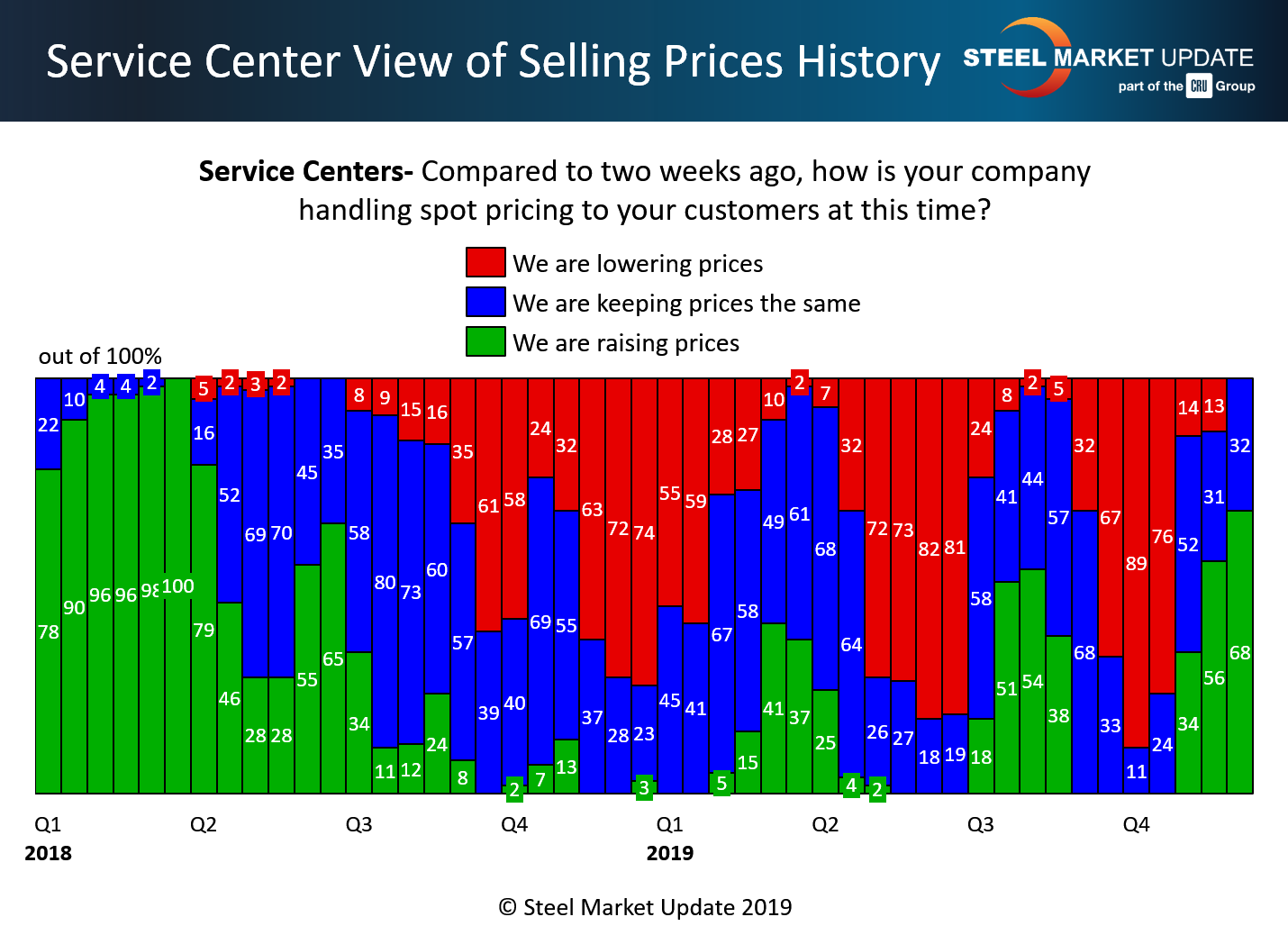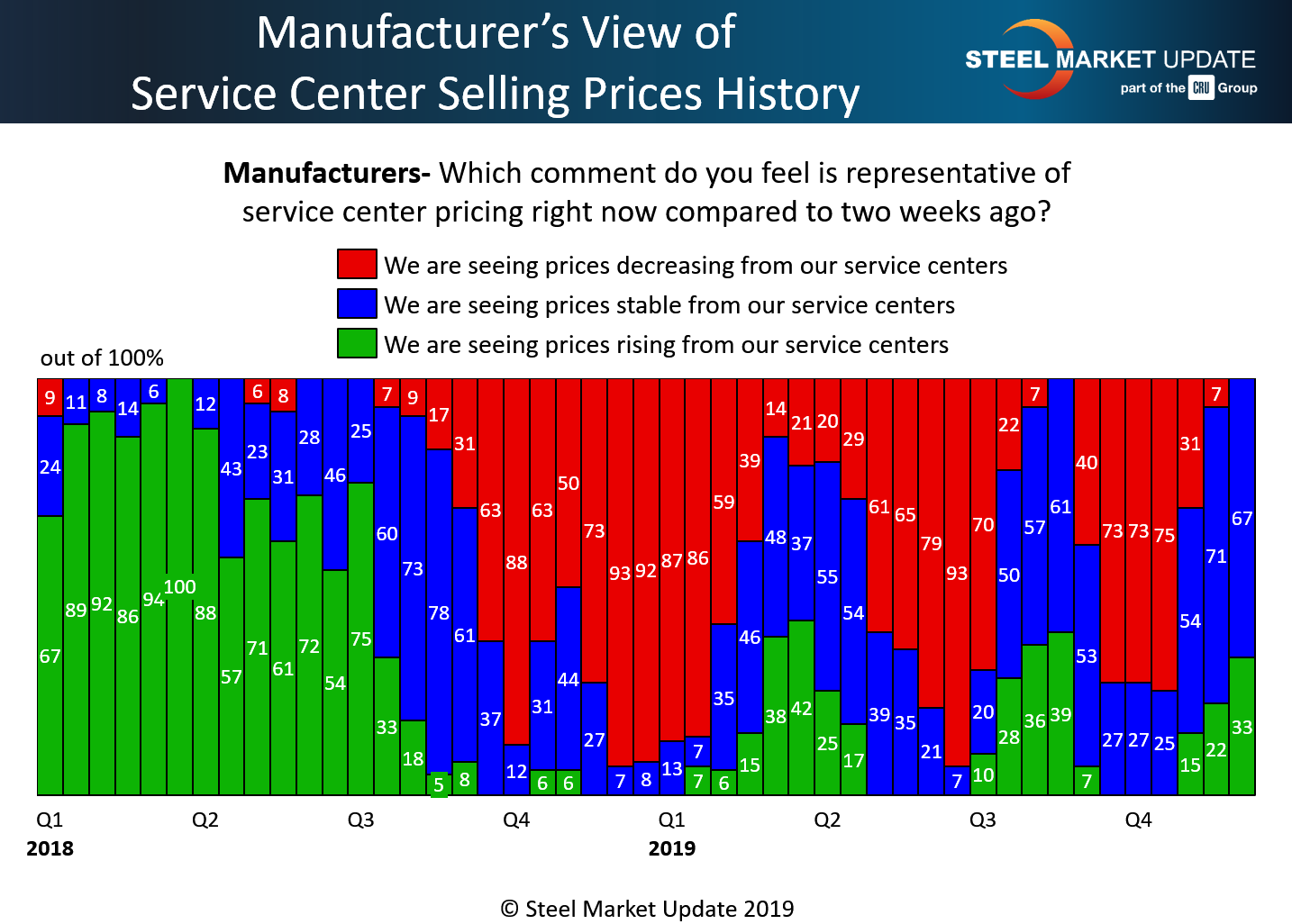SMU Data and Models

Service Centers Increasingly Support Mill Increases with their Spot Pricing
Written by John Packard
December 17, 2019
Steel Market Update conducts two flat rolled and plate steel market trends surveys every month. Our early December analysis indicates the flat rolled distributors are raising spot prices to their end-user customers, and in the process supporting at least a portion of the four recent price increases totaling $150 per ton ($7.50/cwt). Whether the mills are successful in collecting these increases comes down to many factors. One key factor identified by Steel Market Update is how service centers are handling spot pricing to their flat rolled end-user customers.
The data we collected a couple of weeks ago is providing a foundation for successful collection of the price increases. By successful we mean better than what transpired earlier this year when we saw two attempts to move prices higher that were not supported by the domestic distributors and ultimately failed.
Let’s review the data to see what is different than the previous two attempts to move pricing.
A higher percentage of steel distributors responding to our flat rolled and plate steel market trends questionnaire reported flat rolled spot prices as being increases compared to where they were two weeks ago (remember, this survey was completed on the 8th of December and we have another survey in process this week). We saw 68 percent of those responding to this question reporting moving spot prices higher. This is up from 56 percent measured during the middle of November, and is the highest level seen since early second-quarter 2018.

What is also encouraging is the lack of companies reporting any erosion of spot prices. This is important, especially when considering we are at the end of the calendar year when taxes, inventories and cash flows are important to steel distributors.
The only possible negative seen at the beginning of this month was only 33 percent of the manufacturing companies reported higher spot prices out of their service center suppliers. This is in line with the results captured during the two previous attempts to raise prices in first-quarter 2019 and again during the third quarter.
However, the manufacturing companies did agree with the service centers in that there was no one lowering spot prices.
On Sunday, we will publish the results we are collecting from the questionnaire we have ongoing right now.


John Packard
Read more from John PackardLatest in SMU Data and Models

SMU Survey: Buyers’ Sentiment rebounds from multi-year low
Both of SMU’s Steel Buyers’ Sentiment Indices edged higher this week. Current Sentiment rebounded from a near five-year low, while Future Sentiment rose to a two-month high

SMU flat-rolled market survey results now available
SMU’s latest steel buyers market survey results are now available on our website to all premium members.

SMU Survey: Sheet lead times pull back after early-June blip, plate holds
Following the uptick seen two weeks ago, lead times eased this week for all four sheet products tracked by SMU, while plate lead times held steady, according to this week’s market survey.

SMU Survey: Pricing power abruptly shifts to steel buyers
The majority of steel buyers responding to our latest market survey say domestic mills are more willing to talk price on sheet and plate products than they were earlier this month. Sheet negotiation rates rebounded across the board compared to early June, while our plate negotiation rate hit a full 100%.

Service centers: Mill orders down marginally in May
SMU’s Mill Order Index (MOI) declined for a third straight month in May, but only marginally.
